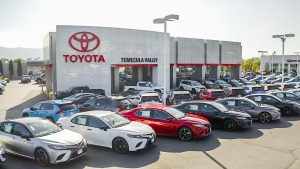Anyone who bought a new car, truck or SUV last month likely paid a little more than they would have in May. Multiple factors are working in concert to keep prices higher than consumers would like.

It took consumers 37.2 weeks of income compared to 37.1 weeks to purchase a new vehicle compared to May.
The latest Cox Automotive/Moody’s Analytics Affordability Index declined slightly, showing it took consumers 37.2 weeks of income compared to 37.1 weeks to purchase a new vehicle compared to May.
“Dealers and manufacturers became less aggressive with pricing due to widespread software disruptions,” said Cox Automotive Chief Economist Jonathan Smoke.
“Despite this, consumers benefited from rising incomes and lower interest rates, keeping overall affordability better than last year.”
What’s happening?
Consumers saw their average monthly car payment rise less than 1% to $756, which is significantly lower than the previous high of $795 in December 2022.
This is despite the estimated average auto loan rate falling by 13 basis points in June to 9.83% — the lowest average rate in a year. While the rate fell, lenders have been a bit stingier about who they’re approving for loans these days.
Continued income growth resulted in a 3.7% improvement year over year, Cox officials noted.
New-vehicle affordability in June was better than a year ago when prices were 0.6% higher, interest rates were slightly lower, and both incomes and incentives were lower. The estimated number of weeks of median income needed to purchase the average new vehicle in June was down 6.3% from the same time last year.
More Sales Stories
- Hackers Hijack June Sales, Automakers Report Mixed Sales Picture
- Who Says EV Sales Are Slowing? Tesla, Maybe – But Not GM, Ford, Toyota or the Koreans
- Japanese Automakers Post Strong April Sales Numbers, Korean Automakers See Sales Dip
Buyers falling short
Cox analysts also noted that auto loan performance deteriorated last month, as more borrowers paid later — or not at all. In June, 1.81% of auto loans were severely delinquent, an increase from 1.80% in May, but not back to the higher levels we saw in March and February.
Defaults increased 3.6% in total in June and were up 12.6% year over year. The June annualized default rate was 2.92%, 10 basis points (BPs) higher than May and higher than the 2.49% annualized default rate in 2019.
The year-to-date default rate is 3.07%, which is 17 BPs higher than the default rate in 2019.





0 Comments